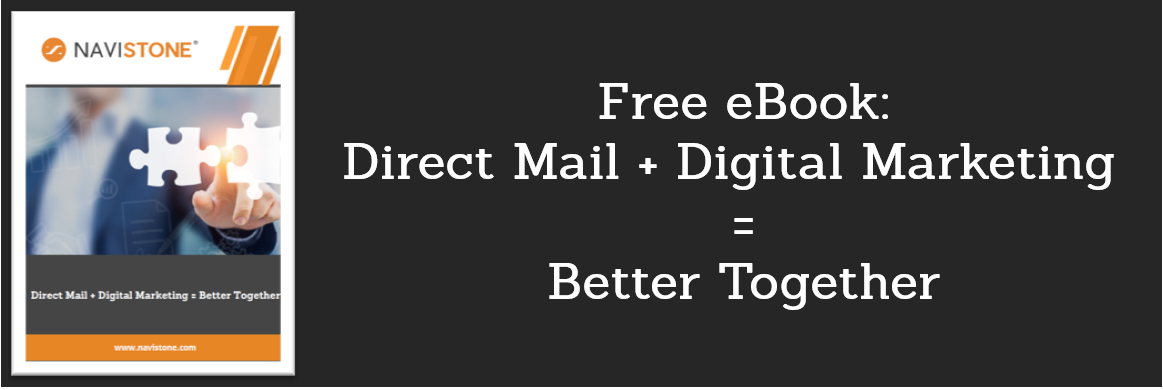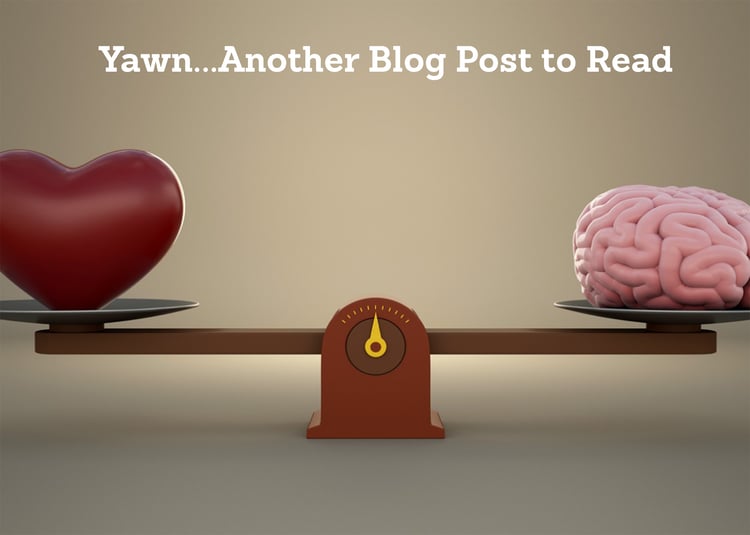This week's blog post is contributed by guest writer, David Khadem, Vice President of Business Development for NaviStone.
Yawn...Another Blog Post To Read
Okay, maybe my title is a cheap tactic to get you to click through, but for some of you, I did draw on your emotion of intrigue, despite me saying that it’s just another boring blog post. (Actually, it’s partly true…I fell asleep writing this.)
When I first began to think about writing this blog post, I thought to myself, how can I do something different from writing just another blog? So, rather than a blog, I chose to write a couple poems, odes, if you will, which I titled “Who Dis?” and “Who Dat From?” and sent them to my boss and Marketing Team for review. I thought they would love the change, but their email responses immediately returned in unison…stating, “What the hell is this?!?! No. No. No. We’re not posting poetry on the company blog. Plus, they don’t even rhyme!" Ironically, their email replies had a slam-poetry tone to it. I was distraught. Not really, but I was trying to be dramatic, so I protested... alas, to no avail. So, you have, yet, another, blog to read.
Uh… Not All Poems Are Supposed to Rhyme
What was their contention with poetry? Poetry is meant to be a concise flow of words and phrases with an underlying and silent rhythm that ideally drives an emotional reaction. And, Marketing 201 teaches us that tapping into a human’s psyche, whether it’s consciously or subconsciously, is an effective and lasting way to connect with your audience. Emotion drives interest and attention, and, ultimately, a feeling or action. After all, as marketers, aren’t we just sirens and muses…trying to both allure and lure in our marketing outreach?
It’s Your Job, Whether You Like It or Not
Whether it’s in our titles or part of our job responsibilities, we are all copywriters. In copywriting, the focus tends to be on the descriptive and functional elements of the copy, whether it be an email subject line, a banner ad, postcard copy, or even a blog post. Descriptive elements include the nuts and bolts description of the product/service or topic you’re covering. Functional elements typically include the desired action, like a “Buy Now”, “Click Here”, etc.
But, the emotional aspect of our messaging is often not given equal importance, is an afterthought, or forgotten altogether.
I would contend that emotive language is an absolute must for strong and effective copy –arguably having greater importance over the descriptive and functional elements of our marketing messages. After all, we are humans first, consumers second, and, our basic instincts, feelings, and reactions are tied to emotional triggers – many of these triggers concealed by the written word.
Maybe, instead of taking lessons from business and marketing leaders, we should be taking a literal page from Homer or Shakespeare – which could teach us better ways to not just connect with our audience, but, better yet, emotionally connect with them.
CLASSIFIEDS: Looking To Hire Beatniks
I’m not suggesting that we fire our marketing staff and put out job requisites for Beatniks, so they can write poems and sonnets in lieu of conventional marketing messages. I am suggesting that we need to be more cognizant of what we are putting in front of our intended recipients and we should absolutely take an extra effort to go a level deeper in the messaging. There’s a reason why for years Michelin used a baby in its advertising along with the tagline, “Michelin. Because so much is riding on your tires.”
In any case, brands and brand equity are often built over time by connecting with our basic human emotions. Why shouldn’t our daily marketing copy? It absolutely should.
Human emotions are complex and depending on the research, there are usually anywhere from 5 – 8 basic emotions. Here’s a common list of 6: anger, happiness, surprise, disgust, sadness, and fear. And, of course, there are countless other sub-emotions that branch from these primary ones. Below are just few examples of marketing messages and the corresponding human emotion that is elicited.
“Sale Ends Soon” – hits on your emotion of fear of missing out
“Everything you wanted to know about…” – triggers your curiosity and intrigue
“Your order has shipped” – who doesn’t love the anticipation of getting a package
As you can see, depending on the aspect of human emotion you are trying to reach, will very much dictate the type of emotive language used in the marketing message.
And, the use of emotional elements doesn’t necessarily mean a sappy message with sappy imagery and a sappy undertone. Take the insurance industry, where much of their copy taps into our anxiety or fear even if the marketing message is a humorous one. The auto industry often uses guilt and the need to feel safe by focusing on reliance. There are plenty of emotional undertones that can drive a desired feeling or action. What you use, really depends on your product, service, brand, season, etc.
Why Does It Really Matter?
The real point I’m trying to make is that the underlying drive for almost any action is an emotional one. Descriptive and functional elements of your message are the foundation of your marketing and copy, but the foundation of human feeling and action is directly tied to emotion. Who is your audience? What is their intent? What emotion are they seeking when researching your products? Good marketing and copy should always strive to reach the human spirit, emotion, and psyche.
If you’ve farmed out some of this work to an agency or freelancer, just be sure that they understand your business objectives, who your customers are and why they buy from you, and what your brand stands for. Knowing this, will help guide the emotive language or undertone to use.
(By the way, if you’re interested in reading my forbidden poems, “Who Dis?” and “Who Dat From?”, and my attempt to serenade you just shoot me a note: dkhadem@navistone.com.)


Lookalike Audiences Enhance customer acquisition by identifying high-potential prospects, boosting response rates, and lowering advertising costs.
Retargeting Postcards Double the performance of your direct mail retargeting.
Amplify Recognize unknown visitors who are actually customers. Add 20-40% to your ESP/CRM campaigns.
IQ Mail Retain customers with personalized, timely messages for those opting out of digital channels.






Comments